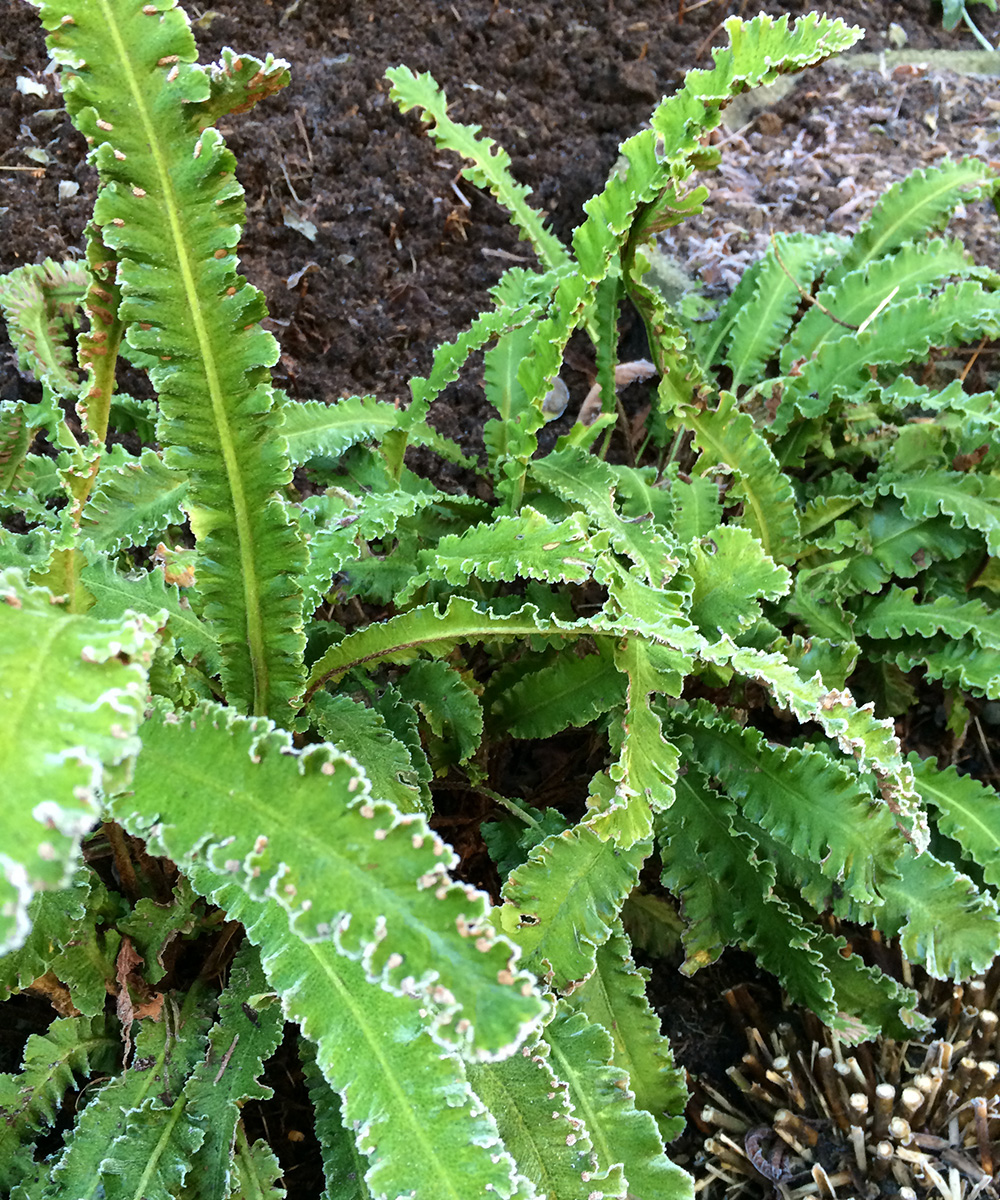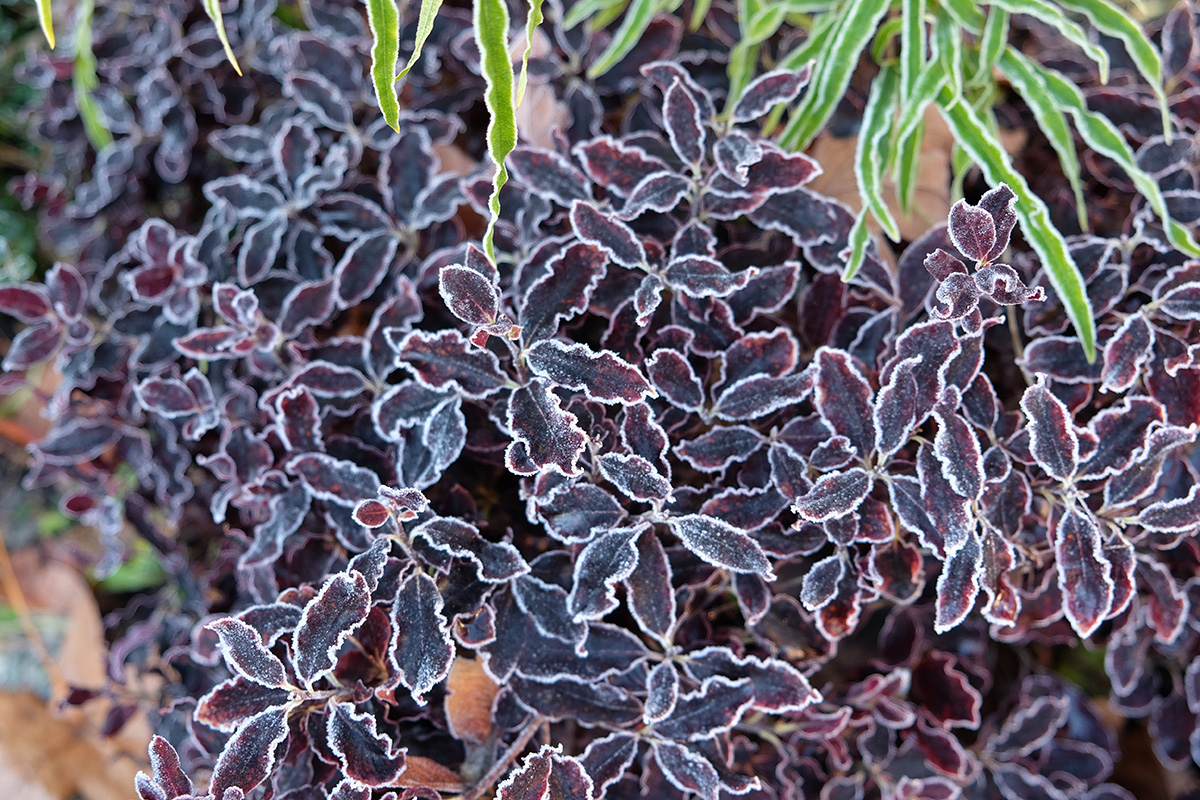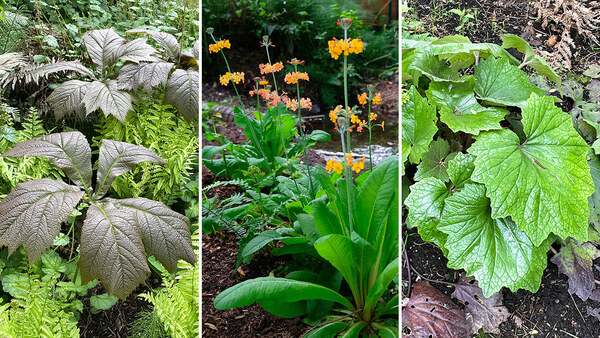
I love a cold frosty morning. It’s lovely to wander the garden (coffee in hand to keep my fingers warm) looking for new views of winter magic. This is the time of year when I discover a newfound appreciation for evergreen perennials and broadleaf shrubs. Frost brings out the edges of the foliage on these plants, allowing me to notice the intricate, small patterns. Buds, dormant but standing proud, remind me of the promise of spring. And the branches of these evergreens, some with peeling bark and others with other unique traits, help me better appreciate each plant as a whole. The following evergreen perennials and broadleaf shrubs can help you see your garden in a whole different way.
Fragrant rhododendron
(Rhododendron ‘Fragrantissima’, Zones 8b–10)
This lovely rhododendron is not normally hardy in my area of the Pacific Northwest, but if it has good, moist but well-draining soil and a little protection, it can survive. I’m lucky to have some mature alders (Alnus cv., Zones 3–7) that give high canopy shade and protect it from serious cold. A touch of frost highlights the leaf structure and dormant buds.
Hart’s tongue fern
(Asplenium scolopendrium ‘Crispum’, Zones 5–9)
Winter is when evergreen ferns put their best foot forward. Hart’s-tongue needs light shade and good moisture. A touch of frost shows off the edges of the fronds and the dormant spores just waiting for spring to spread. During other times of the year, mine is sometimes covered by the maidenhair fern (Adiantum aleuticum, Zones 3–8) dormant beside it. Winter is the best time to enjoy my hart’s tongue fern.
Tassel fern
(Polystichum polyblepharum, Zones 5–8)
One of my favorite ferns is tassel fern, which prefers full to partial shade. From the bright green new fronds emerging with soft brown fuzz dripping off the pinnules, to the stiff arching shape of the blades, it’s a show-stopper. You’ll also no doubt love to see the little babies held on the tips before falling to the ground, too. And when covered with silvery frost, it is one of the best things in the garden.
‘Cavatine’ andromeda
(Pieris japonica ‘Cavatine’, Zones 5–8)
Andromeda enjoys a wide following among gardeners. Cultivated for many years, it sometimes seems too mundane for specialty gardens. Blooming in spring and summer, it is for great pollinators, however. But when not in flower, it is often overlooked the rest of the year. In winter, though, you can see that it has already set buds for next year and is actively growing. Covered in frost and backlit with a low winter sun, this plant will stop you in your tracks. ‘Cavatine’ is a dwarf variety that only gets 2 feet tall and wide. Here it looks variegated but is just edged with a deep margin of ice crystals.
‘County Park’ pittosporum
(Pittosporum tenuifolium ‘County Park’, Zones 7–10)
One of few evergreens with dark maroon foliage, the slow-growing ‘County Park’ pittisporum is stunning when covered in frost. Low-growing with fabulous glossy, rippled leaves, it should be in every garden. The summer flowers are hard to see but smell fabulous. It is often overlooked in this bed until winter, when the perennials and grasses die back and you can really appreciate it. It’s a true collector’s plant that is worth looking for.
Watch for the next clear night, and be prepared to venture into the garden in the morning while clutching a hot drink. Little icy fingers of frost give a glow to plants, even if just briefly. It will remind you that the garden is merely slumbering and preparing to burst back into life!
—Susan Calhoun is the owner of Plantswoman Design in Bainbridge Island, Washington.
Photos: Susan Calhoun























Comments
Log in or create an account to post a comment.
Sign up Log in